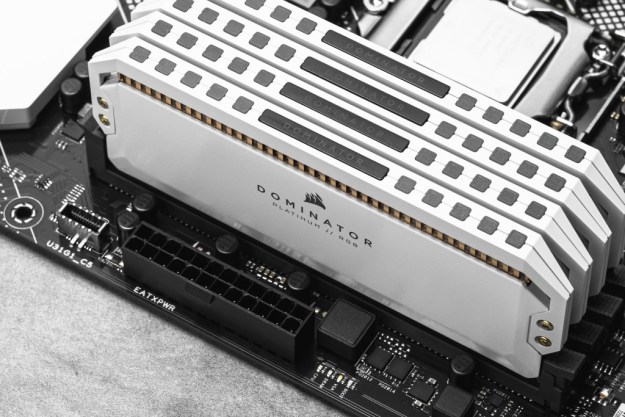Consoles don’t often have a leg-up on PC gamers in terms of technology. But if we’re talking about the upcoming Xbox Series X and PS5 versus current Intel processors, the tides have turned.
The AMD-powered consoles are expected by this holiday season, but according to the latest rumors, PCIe 4 now won’t land on Intel processors until next year at the earliest with the launch of the 11th-gen Rocket Lake-S chips. A leaked SiSoftware benchmark result posted on VideoCardz suggests that Rocket Lake-S will be the first Intel desktop processor to support this specification. That will make it roughly two years behind AMD.
Intel’s slow embrace of the new PCIe 4 standard could be just one of several roadblocks that lead to PCs lagging behind next-gen consoles. Upcoming consoles gamers could see a big technology advantages over their PC gaming counterparts, at least in the near term, largely thanks to AMD’s early adoption of the faster PCIe 4.0 specifications on its desktop processors.
Some rumors pointed toward Intel supporting PCIe 4 this year in its 10th-gen Comet Lake-S platform, but that didn’t pan out.
So yes, Intel is behind. But will PCIe 4 actually matter?

As it turns out, yes. PCIe 4 solid-state drives could end up delivering a significant boost in performance to future video games. Noting that the PlayStation 5’s PCIe 4-based SSD (solid-state drive) is “god-tier,” Epic CEO Tim Sweeny told PCGamer that the faster speeds are needed to take advantage of more detailed scene rendering.
“You can bring in [the demo’s] geometry and display it despite it not all fitting in memory,” he said. As gamers pan around and move around the environment in an open-world game, this faster storage helps to seamlessly and fluidly increase the level of details in distant objects as you move closer.
For early adopters of AMD’s PC processors with PCIe 4 support, though, not all of the speed benefits of PCIe 4 standard have been fully unlocked just yet. Because of the standard’s limited support, a late 2019 benchmark performed by PCGamesN revealed only marginal performance improvements on a PCIe 4-based 2TB Corsair Force MP600 solid-state drive over Samsung’s popular 970 Evo drive. The results showed that game loading time was only slightly faster on the PCIe 4. That’s not too impressive.
But future controllers will allow read and write drive speeds to reach even faster speeds. The problem is that existing game titles don’t have built-in support for PCIe 4 drives at the time of testing. The potential of these drives hasn’t yet been realized, a situation that we expect to change once the next-generation consoles debut and more desktops support this standard.
Separately, Gigabyte announced its fastest PCIe 4 SSD could reach up to 15,000 MB per second read and write speeds, which would be a significant performance jump over current-generation drives. They will be beneficial for gaming, but also for data science, artificial intelligence applications, and more.

Aside from missing PCIe 4 support on its current lineup of processors, another area where Intel finds itself lagging behind AMD is with 7nm support. Though AMD debuted its 7nm node when it launched its Ryzen 9 3900X processor, Intel is still experiencing delays. The company recently revealed that it is restructuring its organization in order to help accelerate 7nm development, a move that resulted in Chief Engineering Officer Dr. Murthy Renduchintala exiting the company.
In addition to the reorganization, Intel also announced that its 7nm processors will be facing delays. Originally slated for a late 2021 launch — which is already a full year after 7nm will be appearing in Microsoft’s Xbox Series X and Sony’s PlayStation 5 — these processors are now planned for as late as a 2023 debut.
With Intel being late to the PCIe 4 game and the company’s stumbles at arriving at 7nm, console gamers already have a technology advantage. We won’t know the true damage for quite some time, but as more and more developers begin to design games around these technologies, Intel gamers could get left in the dust.
Editors' Recommendations
- 4 CPUs you should buy instead of the Intel Core i9-13900K
- No one wants to buy AMD’s Zen 4 chips — what’s going on?
- Intel’s Thunderbolt 4.2 promises up to three times the capability of predecessor
- Intel Raptor Lake release date leaked, and it’s good news for AMD
- AMD, Nvidia, and Intel all get rumored next-gen release dates



